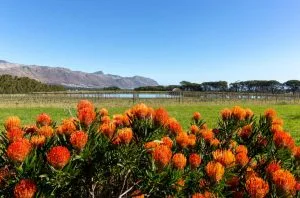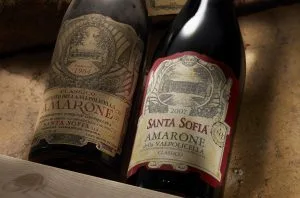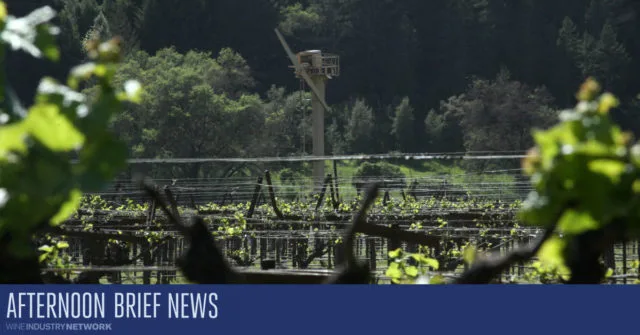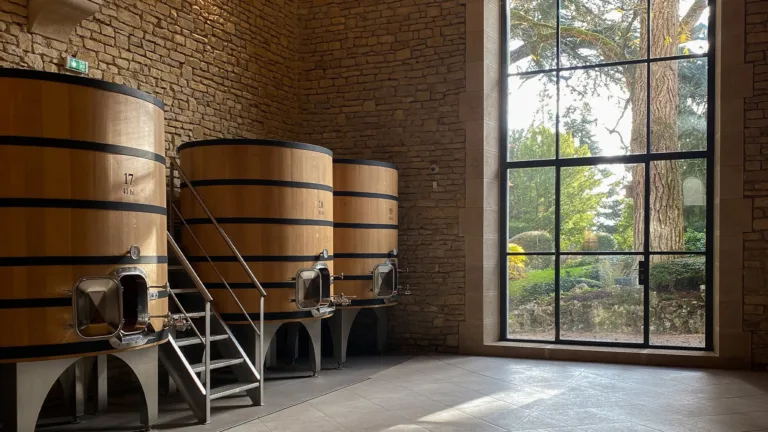The Journey’s End estate sits in a magical location at the southeastern tip of Stellenbosch, facing the Atlantic and overlooked by Helderberg Mountain – Afrikaans for ‘shining mountain’. Its vineyards benefit from a unique terroir, with 350-million-year-old decomposed granite soils and the cooling sea breeze from False Bay, known locally as the ‘Cape Doctor’.
Originally from Shropshire, the Gabb family were struck by the natural beauty of the site, and founded the winery in 1996. ‘It’s a beautiful place to make wine,’ says winemaker Mike Dawson. ‘So the primary aim and focus at Journey’s End is to produce terroir-driven wine, with minimum manipulation.’

Winemaker Mike Dawson in the Journey’s End winery. Credit: Halima Beale
Preserving, not exploiting, the land
Just as powerful, however, is Journey’s End’s desire to protect this special environment and preserve it for future generations. This is the philosophy behind numerous initiatives in the winery and vineyards, including planting 10,500 spekboom succulent plants on the estate to capture carbon.
‘We try to reuse and recycle absolutely everything that we can,’ says Dawson; the winery’s waste water, for example, is treated and recycled, and the farm captures rainwater to use ‘for drip irrigation – as opposed to putting pressure on local resources.’
Journey’s End was the second winery in South Africa to convert to solar power. ‘The roofs of our cellars are completely covered in solar panels,’ notes Dawson. ‘We’ve recently installed a ginormous






